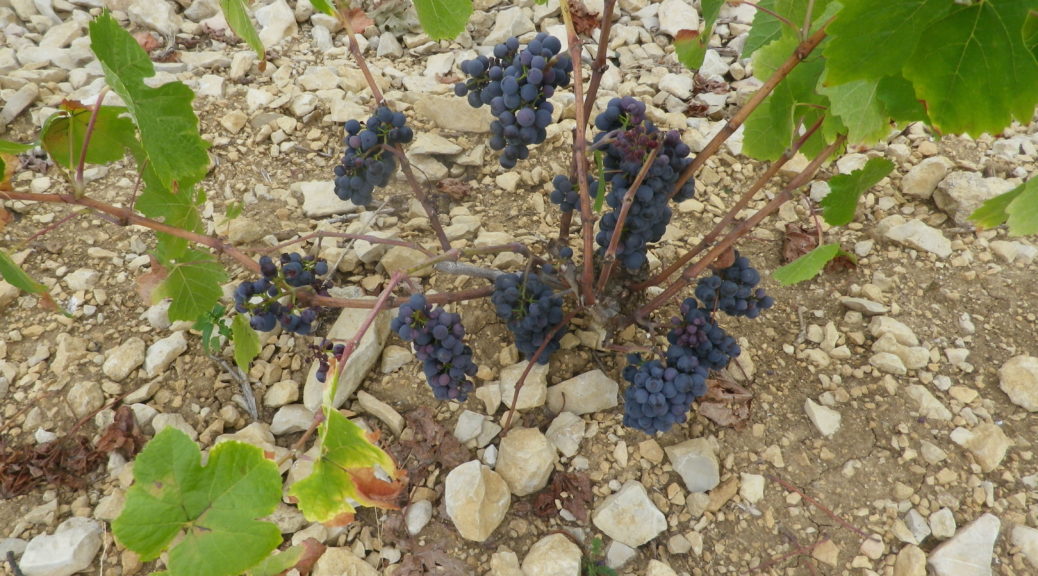What I Learned
Champagne, the sparkling wine, can only come from Champagne, the region, about 90 miles northeast of Paris. Although grapes were cultivated in this northern region of France as early as Roman times, the often cold, foggy climate worked to ensure that grape ripening was not consistent from year to year. Hence ripe grapes in Champagne were sought high and low to add to the big houses’ champagne blends.
But what constitutes the champagne producing area of Champagne? That was a contentious question at the turn of the 20th century. In 1911, such a question provoked massive riots. At issue was the right of the wine-makers in southern Champagne to use the champagne appellation for their sparkling wines made from their grapes.
The Cote des Bars is one of five wine districts within the Champagne wine region, located in and around two Bars: Bar-sur-Seine, and Bar-sur-Aube, in the Aube department. Cote des Bars is far south from the other four, being much closer to the Cote d’Or Department than Epernay and Reims. Its soils are mostly clay and limestone, rich in fossils of ancient sea shells. It has centuries of experience with viticulture, and the grand champagne houses to the north, often did, and still do, source some of their grapes for their champagnes from the Cote des Bars. But it wasn’t until 1927 that the Cote des Bars finally gained appellation status.
The grapes the grand houses bought in the Aube (on the cheap (it must be added)) are the same grapes authorized for use in all champagne wines: Chardonnay, Pinot Noir, and Pinot Meunier. The vintners in the Cote des Bars process these grapes, like elsewhere in Champagne, using the traditional (i.e.: champagne) method to produce their champagnes.
While some champagne lovers (especially those aficionados of the grand, northern houses) might look down on champagne from the Cote des Bars, I found that the producers here were innovative and passionate about their practices, product, and terroir above all. And throughout my travels, I never met a bottle of champagne from the Cote des Bars that I didn’t like!
What I Tasted
Champagne Brut, Cuvee Speciale, Champagne Cheurlin Dangin (Celles-sur-Ource): A dry white sparkling wine cuvee with fine, lively perlage, and medium gold color; a floral nose, with spice, bready and slight floral flavors; medium acidity, very well balanced
Champagne Brut, Carte d’Or, Champagne Cheurlin Dangin: A dry white sparkling wine cuvee with fine, lively and persistent perlage, and medium gold color; a brioche and white fruits nose, green apple, pear and yeasty flavors; medium plus acidity
Champagne, Brut, Alliance, Jean Josselin (Aube/ Gye-sur-Seine): A dry sparkling wine cuvee (Pinot Noir and Chardonnay) with fine lively bubbles and pale white gold color; floral aromas, with spice and floral flavors, with a hint of smoke; High minus acidity
Champagne Brut, Cuvee Origance Millesime, Champagne Cheurlin Dangin: A dry white sparkling wine cuvee with fine, lively perlage, and medium gold color; a yeast and white fruits nose, with peach, slight green apple and bread-like flavors; Medium plus acidity.
Champagne, Extra Brut, VD, Thierry Massin (Aube/ Ville-sur-Arce): A dry sparkling wine (100% Chardonnay), with fine, lively bubbles, and pale, white-gold color; a floral and fruity nose, with green apple flavors; High acidity.
Champagne, Brut, Melodie, Thierry Massin: A dry sparkling wine (100% Chardonnay), with fine, lively bubbles, and pale, white-gold color; a slight fruity and floral nose, with green apple and floral flavors; Medium plus acidity.
Champagne Brut, Speciale, Champagne Cheurlin: A dry white sparkling wine cuvee with fine, lively, persistent bubbles and white gold color; a pronounced yeast and bread nose, with floral and white fruits flavors, with a bit of citrus on the finish; Medium acidity with a medium finish
2011 Champagne Brut, Blanc de Blancs, Alexandrine, Champagne Jean Jacques Lamoureux (Les Riceys): A dry white sparkling wine (100% Chardonnay) with fine, lively perlage, and medium plus straw gold color; a yeast and green apple nose, with bready, spicy, and apple flavors, with a hint of honey; medium plus acidity.
